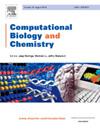利用海洋生物活性化合物:对类风湿性关节炎和重度抑郁症治疗的计算机洞察
IF 2.6
4区 生物学
Q2 BIOLOGY
引用次数: 0
摘要
由于耐药感染、慢性疾病的发病率增加,以及需要发现新的治疗方法,对发现新的治疗药物的追求日益增加。传统上,药物分子的来源仍然是陆生植物和微生物,然而海洋生物的化学适应性在化学方面表现出一些非常独特的东西,仍然是一个未知的前沿。海洋生物活性化合物——由海洋生物产生的对人类健康有积极影响的化学物质——由于其药物潜力而引起了特别的兴趣。海洋生物的范围从大藻类(海藻)、微藻类、海绵到软体动物、棘皮动物和鱼类。这些类别中的每一种都会产生各种具有独特生化特性的生物活性化合物。许多海洋来源的化合物显示出很强的抗菌活性、抗癌活性和神经保护作用。尽管海洋生物活性化合物在药物发现方面具有巨大的潜力,但诸如可及性和可持续性、海洋化合物的复杂性以及监管和批准等挑战是将其从实验室推向临床的瓶颈。应对这些挑战是海洋药典全面发展的迫切任务。本文综述了海洋来源的化学物质作为铅分子在预防重度抑郁症和类风湿关节炎方面的可能应用。本文章由计算机程序翻译,如有差异,请以英文原文为准。
Harnessing marine bioactive compounds: In silico insights into therapeutics for rheumatoid arthritis and major depressive disorder
The quest for the discovery of novel therapeutic agents’ increases day by day owing to the increased incidence of drug-resistant infections, chronic diseases, and a need for discovering novel treatments. Conventionally, the sources for molecules of drugs have remained from terrestrial plants and microorganisms, yet the chemical adaptability of marine organisms presents something very unique in chemical terms and remains an uncharted frontier. Marine bioactive compounds-chemicals produced by marine organisms that have positive health impacts on humans-attract particular interest due to their pharmaceutical potential. Marine organisms range from macroalgae (seaweeds), microalgae, and sponges to molluscs, echinoderms, and fish. Each of these categories generates a variety of bioactive compounds that have unique biochemical properties. Many marine-derived compounds have exhibited strong antimicrobial activity, anticancer activity and neuroprotective effects. Despite the enormous potential of marine bioactive compounds in drug discovery, several challenges like Accessibility and Sustainability, Complexity of Marine Compounds, and Regulation and Approval act as bottlenecks in taking them from the lab to the clinic. It is an imperative task to tackle these challenges for a complete development of marine pharmacopoeia. This review emphasizes on the possible application of chemicals emanating from marine sources as lead molecules for the prevention of major depressive disorder and rheumatoid arthritis.
求助全文
通过发布文献求助,成功后即可免费获取论文全文。
去求助
来源期刊

Computational Biology and Chemistry
生物-计算机:跨学科应用
CiteScore
6.10
自引率
3.20%
发文量
142
审稿时长
24 days
期刊介绍:
Computational Biology and Chemistry publishes original research papers and review articles in all areas of computational life sciences. High quality research contributions with a major computational component in the areas of nucleic acid and protein sequence research, molecular evolution, molecular genetics (functional genomics and proteomics), theory and practice of either biology-specific or chemical-biology-specific modeling, and structural biology of nucleic acids and proteins are particularly welcome. Exceptionally high quality research work in bioinformatics, systems biology, ecology, computational pharmacology, metabolism, biomedical engineering, epidemiology, and statistical genetics will also be considered.
Given their inherent uncertainty, protein modeling and molecular docking studies should be thoroughly validated. In the absence of experimental results for validation, the use of molecular dynamics simulations along with detailed free energy calculations, for example, should be used as complementary techniques to support the major conclusions. Submissions of premature modeling exercises without additional biological insights will not be considered.
Review articles will generally be commissioned by the editors and should not be submitted to the journal without explicit invitation. However prospective authors are welcome to send a brief (one to three pages) synopsis, which will be evaluated by the editors.
 求助内容:
求助内容: 应助结果提醒方式:
应助结果提醒方式:


